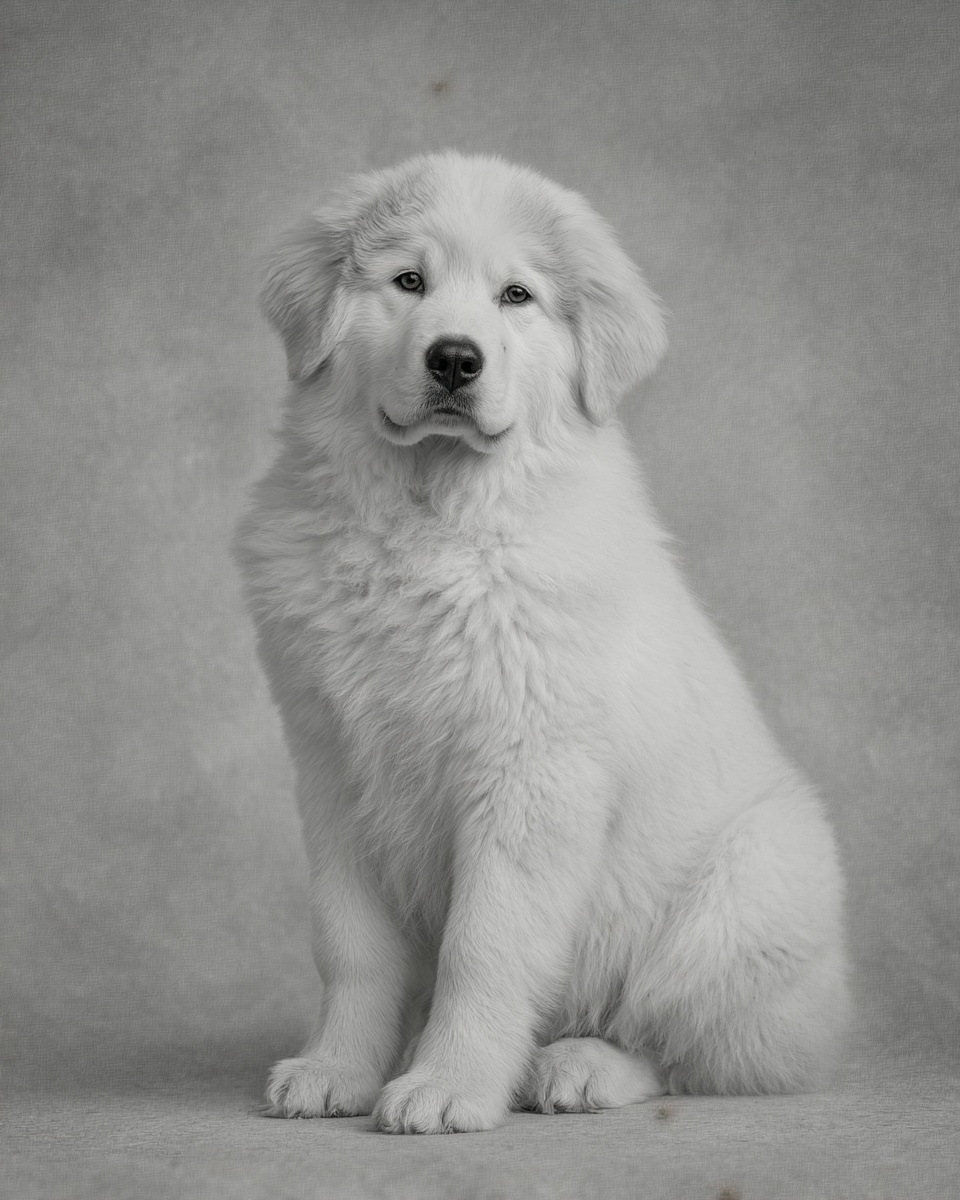Great Pyrenees

Description
The Great Pyrenees, often called the Pyrenean Mountain Dog, comes from rugged mountain ranges between France and Spain. This breed guarded flocks of sheep and other livestock from wolves and bears for centuries. They carry a calm, steady presence but can be stubborn and independent. They watch over their home and family with quiet confidence, making them excellent protectors. These dogs weigh between 85 and 100 pounds and wear a thick, white double coat that often shows tan, gray, badger, or reddish brown markings. Their bark is moderate but purposeful, used to alert and warn. They bond deeply with their people but need early training to balance their strong will and natural guarding instincts.
Grooming
The Great Pyrenees has a medium-length double coat that sheds heavily, especially in spring and fall. Brushing three times a week keeps mats and tangles away. Use an undercoat rake to pull out dead hair during shedding seasons. Bathing every 4 to 6 weeks helps keep the coat clean, and blow-drying afterward reduces loose fur around the house. - Brush 3× weekly; daily during heavy shedding - Use an undercoat rake to remove dead hair - Bathe every 4–6 weeks; blow-dry to de-shed - Check ears and trim nails regularly Pro tip: Focus on the areas behind the ears and under the legs where mats form easily. Their white coat can show dirt quickly, so spot clean paws and belly after outdoor time. Regular grooming keeps their thick coat healthy and manageable.
Learn the Double routine:
→ Complete Double Grooming Guide
Walking
Great Pyrenees need about 50 minutes of walking daily, split into one solid session. They prefer a steady pace and plenty of sniff breaks. This breed doesn’t rush but enjoys a calm, purposeful walk where they can check their surroundings. Avoid overly busy or noisy routes, as they can be sensitive to chaos. Example routine: - Morning: 50-minute walk around quiet neighborhood or park - Include time for sniffing and slow exploration This routine helps satisfy their roaming instincts without overexertion. They’ll appreciate a secure yard to wander safely between walks.
Boarding
Great Pyrenees require a large crate—48 inches or bigger—to stretch comfortably. They’re calm but need space to move and lie down fully. Staff should provide daily exercise with calm decompression time, allowing the dog to relax and unwind after activity. Enrichment like gentle play and chew toys helps keep their mind engaged. These dogs enjoy quiet companionship and do best with handlers who understand their guarding nature and respect their independence. Staff should watch for signs of stress or boredom and offer breaks outside the crate for gentle roaming. A secure, peaceful environment suits them best during boarding stays.